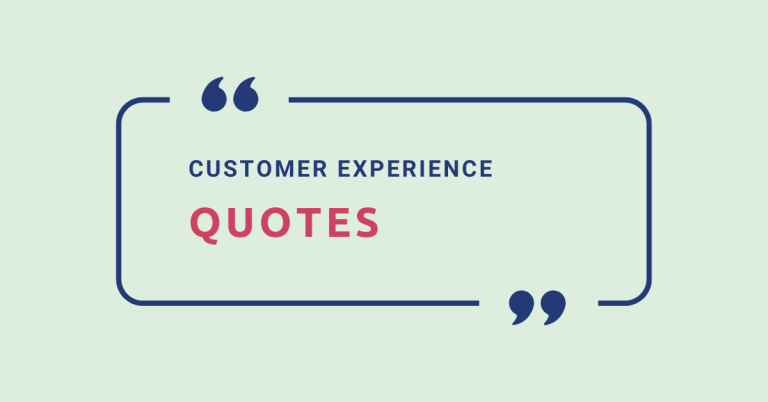Customer service coaching programs include exercises to improve soft skills like active listening, communication, problem-solving, etc. Implementing effective coaching and training involves identifying goals, selecting the right coach, creating a training plan, incorporating feedback, and measuring success.
If your goal is to retain customers and extract more value from them, then you should consider customer service coaching to upskill your care agents to help them deliver high-quality support experiences.
But, how exactly does customer service coaching benefit your business, and how can you achieve great results? This customer service coaching and training guide will answer these questions and more.
At the end of this “customer service fundamentals” article, you’ll understand the far-reaching benefits of coaching your support team, the different types of customer service coaching, and the skills/techniques for optimised results.
What is Customer Service Coaching?
Customer service coaching is the process of providing training and guidance to employees who interact and deal with customers.
Popular business statements like “customer is king” and “customer is always right” show how important it is to impress customers and make them feel special.
Typically, customer service coaching refers to the implementation of initiatives for improving communication skills, product knowledge, conflict resolution skills, and more.
Such initiatives equip care agents with the knowledge and soft skills required to solve customers’ problems, show them the company cares, and, ultimately, make them happy.
How does customer service coaching differ from traditional training methods?
Coaching and training are often used interchangeably in customer service. However, they differ in that while training is about developing a specific skill, coaching is a strategy for enhancing the acquired skill(s).
Traditional training focuses on transferring fresh knowledge, information, or skills to people, especially new employees. It uses one-to-many communication, whereby one person (the trainer) introduces a group or an individual to a new knowledge or concept.
Customer service training is a one-time or short-lived baseline upskilling for team members. It’s designed to help support agents learn what customer service entails.
However, coaching focuses on enhancing existing knowledge and skills.
Customer service coaching relies on one-to-one communication, whereby a support agent receives individualized guidance from an experienced person in the field.
Coaching takes a less structured approach. The one-to-one setting allows for more informal communication and tailored guidance.
Key differences between customer service training and coaching methods:
| Training | Coaching |
|---|---|
| One trainer to many agents | One coach to one agent |
| Transfer of fresh knowledge and skills to develop new competencies | Enhances existing knowledge and skills to provide better service |
| Structured | Informal and conversational |
| One-size-fits-all approach | Tailored to the individual |
| Learning focused | Development focused |
| One-time or short-lived | Ongoing |
The different types of customer service coaching
Here are some ways to conduct customer service coaching for your support agents.
One-on-one coaching
One-on-one coaching pitches one customer service rep with someone with experience for personalized mentoring. Traditionally, coaching relies on one-on-one sessions.
Group coaching
Group coaching pitches a group of agents with someone with experience for mentoring.
While coaching traditionally relies on one-on-one sessions, you may have more agents than coaches. Thus, the need to match one coach with several agents.
Unlike one-to-many training sessions that rely on lectures to transfer knowledge, group coaching enhances knowledge in a collaborative environment.
The coach facilitates discussions and runs activities that let participants share their knowledge, viewpoints, and insights and support one another.
Online coaching
Online coaching is virtual one-on-one coaching. Using video, audio, or messaging technology, a coach engages and mentors an individual in the same manner as they would in a face-to-face setting.
Online coaching offers flexibility and convenience, as you can hold sessions from anywhere.
Peer coaching
Peer coaching is when two or more customer support agents (at the same organizational levels) agree to provide coaching support to one another.
The goal is to objectively assess one another to identify areas each person can make adjustments to be more successful in their roles.
Peer coaching is the cheapest kind of customer service coaching as it is free. It can also help your support agents for stronger working relationships. However, it takes up a lot of time and may be ineffective, especially if none of the agents have the abilities you wish to pass on.
Manager-led coaching
Manager-led coaching involves matching a support agent with the customer service department manager for mentoring. You could also match the manager with several support agents in a group coaching model.
The distinctive factor is that the coach is the department’s manager, not some subject matter expert from outside the department or organization.
Self-directed coaching
Self-directed coaching means self-coaching. The customer support agent takes control of their learning needs.
This includes identifying learning/development needs, creating goals, gathering learning materials, executing learning strategies, and evaluating outcomes.
Benefits of Customer Service Coaching
Investing in customer service coaching will benefit your business in the following ways:
Improved customer satisfaction
Training your customer service agents makes them better equipped to handle customers’ queries.
To show the importance of customer satisfaction, 66% of customers care more about the experience than the price.
With the rights coaching, your agents will have the right information for inquiring customers and know how best to solve customer issues. Your support team will be able to guide customers to derive more value from products and services, leading to happy customers.
Improved customer retention
69% of US consumers say customer service is very important when it comes to their loyalty to a brand.
The importance of customer retention is undeniable for the success of your business. When customers are happy with their interaction with your customer support team, they are likelier to stick around and become repeat buyers.
Increased employee motivation and engagement
Customer service training and coaching help support agents learn and enhance critical skills and competencies. In turn, your support agents will feel more confident in their work.
Providing coaching also tells your support team that you value their growth and development. As a result, they’ll be more engaged and motivated about their daily tasks. As an added benefit, Higher employee retention rates
Improved employee retention
58% of agents say they get very little from their company’s coaching sessions. By offering coaching and personalised mentoring, you can help your customer care representatives perform better, thus limiting frustration and increasing employee satisfaction.
Satisfied employees are far more likely to remain loyal to your company meaning that you will see a drop in your agent attrition rates which traditionally are very high in the customer service world.
Improved teamwork and collaboration
Coaching helps build soft skills like communication, critical thinking, and problem-solving. Applying these skills in the work environment improves teamwork and collaboration.
Also, when using group-focused coaching, your agents go through the experience together, discussing topics and sharing insights with one another. This builds employee relationships toward improving teamwork and collaboration.
Greater efficiency and productivity
Coaching and training is all about making support agents more efficient.
The coaching sessions identify skill gaps and provide personalized guidance to help the agent address such gaps. Since customer service coaching results in more competent agents, it is one of the different ways to improve customer service productivity.
Enhanced reputation and brand image
In today’s ultra-competitive business world, outstanding customer service is a competitive advantage. Elevated support experiences result in happy customers who have the potential to become some of your strongest brand advocates.
92% of consumers trust recommendations from friends and family more than any other form of advertising. So, providing coaching to empower your agents with the tools to make your customers happy will spread positive words about your business is one of the best ways to enhance your reputation and brand image.
Key Skills and Techniques for Effective Customer Service Coaching
Focus your coaching efforts on helping your agents develop and enhance these skills:
- Active listening
- Empathy
- Communication skills
- Problem-solving
- Conflict resolution
- Time management
- Customer relationship management
- Techniques for managing difficult customers
Let’s take a closer look:
Active listening
Active listening is a communication skill beyond simply listening to the other person’s words. It also involves noticing non-verbal communication and providing appropriate feedback to gain mutual understanding.
Note that only 7% of communication occurs verbally, while the remainder happens via body language (55%) or ton and inflection (38%).
Active listening helps you to be fully immersed in what the other person is saying. Some ways to practice active listening include:
- Listen to understand and not to respond
- Withhold judgment and advice
- Ask open-ended questions to encourage further responses
- Paraphrase what the person said and repeat it to them
- Make good eye contact
- Pay attention to non-verbal cues (like nodding) and tone
Empathy
Empathy is the ability to understand and share the feelings of others. It makes you feel the pains of the customer. This ensures you’ll be as invested as much as the customer in finding a solution to a problem.
Thus, when your customer care agent/team has empathy, the focus will not be simply closing tickets but ensuring the customer is happy and successful.
To develop empathy, encourage your reps to think about a frustrating experience as a customer. Have them share how they were treated and how it made them feel.
Communication skills
Communication skills are imperative to meeting customer expectations. In fact, communication skills are among the most important customer service skills.
Effective communication helps support agents resolve customer queries quickly, leading to higher customer satisfaction scores.
One way to teach communication skills is to encourage your support team to explain concepts as if they were talking to a child. You may also do role-play and ask your service reps to present something to you as if you were the customer. Then provide constructive feedback.
Problem-solving skills
Problem-solving will help you support agents in addressing customer problems in a satisfying way.
Customer complaints are numerous and have varying degrees of sophistication and problem-solving skills involve knowing how to:
- Calm an agitated/ angry customer
- Ask the right questions
- Identify the problem and its root cause
- Determine an appropriate resolution and deliver the solution
- Follow up with the customer and request feedback
Conflict resolution skills
Your support agents are certain to encounter dissatisfied customers, and effectively handling such situations requires conflict-resolution skills.
To help support agents develop and enhance conflict resolution, encourage them to:
- Allow angry/ frustrated customers to talk and express their feelings. Emphasize the need not to interrupt angry customers releasing their frustrations
- Own up to mistakes and apologize
- Listen intently when the customer is talking
- Reassure customers that they are understood
- Don’t place blame
- Show empathy
- Be optimistic and use a positive tone when talking with the customer
Time management skills
Customers value their time and would prefer prompt interaction and resolutions. So, applying time management skills and delivering excellent service that lowers ticket handle times is important.
To help your agent develop time management skills, encourage them to:
- Have a clear understanding of the company’s product/ services
- Stay in the know of potential problems that customers may face when using the company’s products/ services
- Work within a certain timeframe
- Use a time-tracking tool
- Know how to prioritize
- Transferring some tasks to colleagues
- Eliminate unnecessary tasks that do not deliver customer value
Customer relationship management skills
Customer relationship management allows agents to manage and analyze customer interactions and data throughout the customer lifecycle.
Omnichannel support systems compile customer data across different channels, giving support agents detailed information on customers to improve customer service relationships.
In addition to developing interpersonal and communication skills, customer relationship management also requires technical skills.
Support agents should be familiar with CRM systems and be able to access them to call up customer interaction history. This gives insight into the customer and supports the agents in providing faster and better customer service.
Techniques for managing difficult customers
Customer agents will also encounter difficult customers (such as the demanding customer, a bully, aggressive customer, indecisive customer, impatient customer, or a know-it-all).
70% of unhappy customers whose issues are resolved are willing to patronize a business again. Plus, you don’t want the bad publicity of unhappy customers. So, dealing with difficult customers is important.
Providing effective customer service to these categories of customers requires high levels of conflict management skills. These include encouraging agents to:
- Remain calm
- Let the customer talk without interrupting them
- Practice active listening
- Speak softly and keep communication professional
- Try to understand the customer’s point of view
- Assess their needs and seek a solution
How to Implement a Customer Service Coaching Program
The following tips will help you implement an effective customer service coaching program:
Identify goals and objectives
Set clear goals for each coaching session. Knowing what you want to achieve helps you to prepare talking points for the sessions. It also helps you to outline the expectations you want your agents to track toward.
Select the right coach
Selecting the right coach is important when implementing customer service coaching because the personality of the coach is as important as the message.
For example, support ants more readily trust the guidance of a coach that shows confidence when approaching a coaching situation.
Create a training plan
A training or coaching plan helps you stay organized when providing information to trainees/ mentees. It can be a simple outline or a more detailed hands-on activity list.
In developing a training plan, you:
- Determine your agents’ training needs
- Set learning objectives
- Implement a delivery mode that will help you get your learning objectives across
Upon evaluation, a training plan can also help you assess the effectiveness of the training program.
Incorporate feedback mechanisms
Feedback is information about performance that is used as a basis for improvement. Providing your service reps feedback when coaching them is like holding a mirror up to them so they see what impact a certain behavior is having.
Employees want to hear how they are doing, so providing feedback will help them stay motivated. Feedback also helps your service reps know aspects of performance to change to get better results.
When providing feedback, start with positive feedback, and make sure your advice is simple and easy to implement.
Measure success and ROI
What cannot be measured cannot be improved. Develop a system to measure your agents’ progress as the coaching continues. There are different agent performance metrics to measure for gauging progress.
Collecting performance data before and after coaching sessions is one way to evaluate the effectiveness of your program. Employees who see how they’re doing often feel more ownership over their growth. Also, measuring success helps you design coaching sessions that match your agents’ growth.
Best Practices for Customer Service Coaching
To get the best out of your customer service coaching, implement these best practices.
Create a positive learning environment
A positive learning environment makes learners feel valued and respected, thereby boosting enjoyment and engagement.
A positive learning environment is rooted in mutual respect. So, treating mentees with respect is a critical step in creating a positive learning environment.
Also, bring a social aspect to your coaching sessions and make mentees feel a sense of personal connection to their learning. Encourage open communication and provide feedback.
Provide ongoing support and feedback
Unlike training that is one-time or short-lived, coaching should be more ongoing. Micro coaching should be deployed to provide ongoing support. This involves regularly engaging agents in one-on-one sessions to offer personalized coaching in short bursts.
One way of doing this is to pull a service rep asides immediately after an interaction to provide real-time performance data and actionable feedback. You should also recognize an agent for providing excellent service.
Encourage self-reflection and self-assessment
Self-reflection and assessment enhance your agents’ learning potential as it makes them take ownership of their own learning.
Encouraging self-reflection means having learners review their performance and reflect on their learning progress.
When learners reflect on their performance and identify gaps in their knowledge/ skill set themselves, they are more motivated to implement actionable feedback to improve results.
Foster a culture of continuous development
A culture of continuous improvement helps your team fight inertia and the tendency to see your performance as the best possible. It helps you to be on top of team-wide performance and changes and to guide your team accordingly.
Some ways to create a culture of continuous development include:
- Give your support agents the time to work on improvements
- Remove unnecessary bottlenecks and give your agents the autonomy to make changes.
- Make it safe for people to fail
- Schedule sessions regularly and as needed to address team-wide performance issues.
- Update agents on new policies.
Celebrate success and recognize achievements
Recognizing the achievement of service reps who promote service excellence will make them feel appreciated, motivating them to post even better performances.
Also, citing examples of great customer service from your team when coaching can boost performance across the board, as it can motivate others to implement similar tactics.
Tips and tricks for effective customer service coaching and training
Some tips and tricks for effective customer service coaching and training are:
Focus on communication
Communication is a critical component of customer service. Ensure your coaching program emphasizes communication skills, including active listening, clear and concise speaking, and effective written communication.
Effective coaching sessions always have two-way communication. So, encourage your customer service agents to share their perspectives during coaching sessions. Ask questions that help learners open up to you. This helps you to meet their needs better.
Personalize the coaching
Every employee is different and has unique strengths and weaknesses. Therefore, personalize your coaching approach to suit each employee’s needs. One-on-one coaching is particularly effective for this purpose.
In one-on-one sessions, determine the agent’s unique needs. Then develop and implement a customized learning plan to meet those needs. Thus, you start from where the learner currently is and guide them toward better results using a pace and methodology that suits the individual best.
Use role-playing
Role-playing is an effective technique for helping employees learn how to handle challenging customer service situations. Role-playing helps employees practice their skills in a safe environment, receiving feedback from coaches and colleagues.
For example, when taking a training course on handling a difficult customer, you can assume the role of the angry customer and task the agent with handling the difficult situation.
Role play engages your support agents in complex real-life situations and helps them learn by doing.
Provide constructive criticism after the role-acting for the agent to know how they can improve their customer interactions.
Don’t forget to recognize aspects of exceptional customer service displayed when role-acting.
Encourage self-reflection
Give employees access to customer feedback. Allow employees the time to revisit interactions and identify areas for improvement. This can help them develop self-awareness and motivate them to improve their skills.
Customer service coaching and training yield better results if the support agents are as invested in their own growth and success as the coach/ organization. One way to make agents invested is to involve them in identifying the problem and formulating solutions.
In self-reflection, agents can identify barriers to improvement (time, tools, additional training, etc.), helping you design solutions that address the real problems.
Also, when agents access their own performance and identify areas for improvement themselves, they more readily make necessary adjustments.
Provide ongoing feedback
Provide ongoing feedback to employees to help them track their progress and stay motivated. Feedback should be constructive and include both positive and negative feedback.
However, a best practice is starting with positive feedback. When you commend support agents for exceptional service, they feel more motivated and confident.
It’s also important to keep feedback simple and actionable. When feedback is easy to implement, your agents feel confident about using the advice in customer service interactions.
Use real-life examples
Using real-life examples can help employees understand how to handle customer service situations more effectively.
Use examples from your own business or other companies to illustrate best practices and common mistakes. This helps learners visualize how to use your advice in practice.
Drawing upon real-life experiences, especially from your professional life, can also help build relationships between you and the learners. They’ll vividly see what worked for you and what didn’t and easily remember your examples when they face similar situations in their workday.
Reward and recognize progress
Recognize and reward employees who make progress in their customer service skills. This can motivate employees and create a positive culture of continuous improvement.
The employees recognized will feel appreciated and motivated to make further progress. It inspires others to achieve the same level of performance.
There are different ways to recognize support agents who have represented the company well. This range from simple things (such as giving public praise in team meetings or communication platforms) to interesting packages (such as offering employee benefits like compensation, additional leave, etc.).
You may also make employee recognition part of your company culture so support agents know what to expect when they meet expectations.
Make it engaging and fun
Customer service training can be dry and boring. However, training or coaching that is not engaging will not be effective. Try to make customer service coaching and training engaging and fun.
Mixing up the delivery method is one way to make coaching more engaging and fun. Learning becomes less interesting with every session when you pass learning objectives the same way every time.
Instead, keep your support reps interested and engaged by mixing up formats, providing a mix of learning aids and experiences, including peer-led training sessions, incorporating role-playing, etc.
Another way to make coaching more engaging and fun is to incorporate interactive elements like games, quizzes, peer challenges, etc. Research shows that contact centers using gamification experienced a 16.4% improvement in average handle time compared to a 4.6% improvement among those without it.
Case Studies
Examples of Successful Customer Service Coaching Programs
Case Study 1
Large retail chain improves customer satisfaction scores through customer service coaching.
The large retail clothing store discovered it needed to improve the customer service skills of its customer-facing staff to be more competitive in the market.
The company arranged a customer service coaching program targeted at helping staff improve in:
- Greeting customers
- Offering assistance
- Helping customers find what they are looking for
- Sorting complaints politely
- Providing courteous, friendly, and helpful services
Group coaching was adopted and delivered by the company’s staff, who are aware of common issues faced by sales staff. The training was based on lectures and followed by videos showing good and bad customer service scenarios.
Feedback from trainees was good, and they were awarded certificates upon completion.
The support staff had better interactions with customers afterward, leading to a 45% increase in shop traffic and an 80% increase in sales.
Case study 2
Small business improves employee retention rates and customer loyalty through one-on-one coaching.
A small online retail business discovered had to swing to action after noticing a concerning agent turnover rate and a low level of repeat customers.
It decided to increase agent engagement via customer service coaching. It engaged one of the local thought leaders who used a combination of group coaching and online coaching.
The few group sessions focused on discussions, encouraging agents to share their concerns and insights into extracting more value from customers. This was followed by practical examples of strategies that work in similar companies.
The support team has not recorded any voluntary exit since the coaching intervention, while repeat customers increased by over 250%.
Case study 3
Online retailer enhances customer experience and brand reputation through group coaching and training.
An online retailer observed an alarming number of negative reviews on customer review platforms, with a recurring theme being a bad experience with support.
It decided to upskill its service reps to handle customer interactions better. It employed group coaching and training using in-house managers.
The coaching focused on enhancing customer service skills. The goal was to equip agents to be able to impress even the most difficult customers so that they’ll become advocates of the company.
The training program was very successful. Agents reached out to customers who had left negative reviews, and over 80% were resolved and updated accordingly.
Positive reviews dominated review platforms from then on, and the few negative reviews posted were laced with positives (e.g., my item was missing an accessory, but customer service helped me get a replacement).
Wrapping Up
Customer service coaching equips your support agents with the skills and competencies to deliver exceptional customer service experiences.
Investing in customer service coaching works wonders for your support team, customers, and business. It improves your support agents’ motivation, retention rate, and productivity. It improves customer satisfaction and retention/loyalty. Also, it enhances your business’ reputation.
Implementing customer service coaching involves making your support agents learn customer service basics and soft skills (like active listening, problem-solving, conflict resolution, etc.). The tips and tricks above will help you implement effective customer service coaching.
Did you like the post?
You might also like:

Surveypal
Everything you need to lead and improve your customer experience. Learn more at surveypal.com, or







